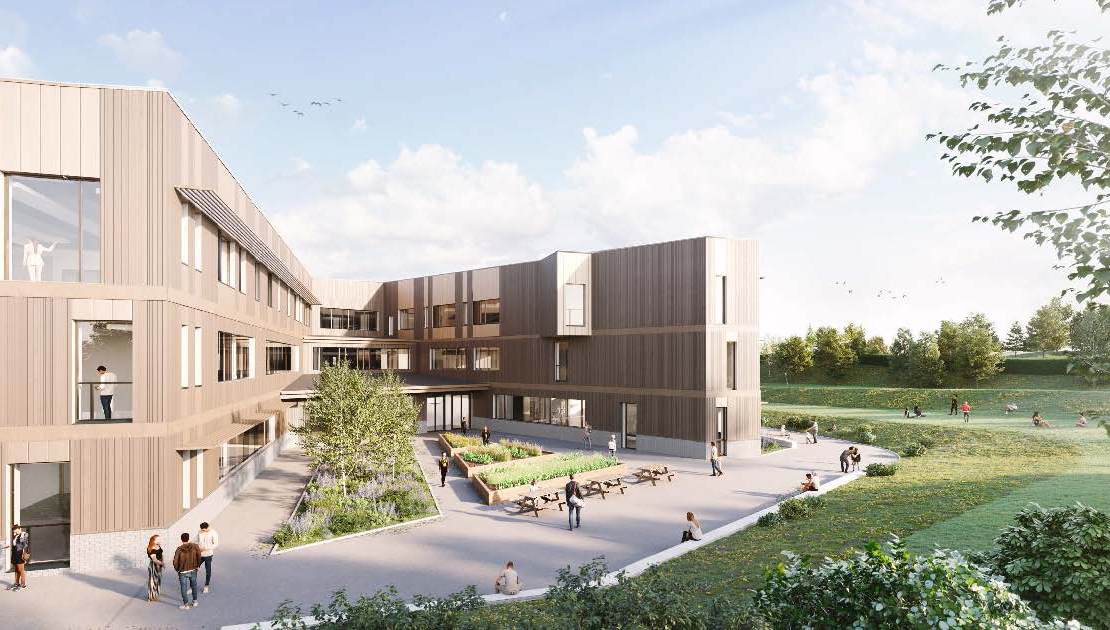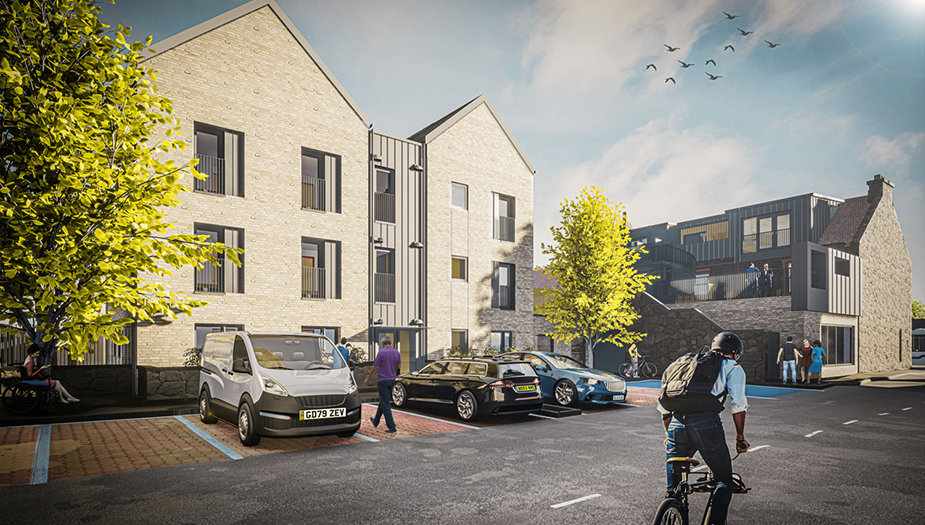The role of retrofit and zero carbon buildings to create carbon conscious places
This Place Forum focused on exploring the different ways we can adapt places to tackle the climate emergency. We invited professionals from the built environment to come together to learn how to create climate-friendly places with new, zero carbon and well adapted existing buildings, playing a key role.
The Place Forum (on 7 June 2023) heard from leading practitioners, policy shapers and decision-makers in the built environment on how we can support carbon-conscious places in Scotland.
It also highlighted the importance of place in decarbonising our homes and building and the role of the Place Principle.
The session was chaired by Heather Claridge from Architecture and Design Scotland, and the speakers were:
Patrick Harvie MSP, Minister for Zero Carbon Buildings, Active Travel and Tenants’ Rights
Jarek Gasiorek and Eugene Mullan from Smith Scott Mullan Associates
Chris Morgan from John Gilbert Architects
Isla Jackson from Civic Engineers
Patrick Harvie MSP, Minister for Zero Carbon Buildings, Active Travel and Tenants’ Rights addressed the event attendees, introducing the challenges we face to meet our legal targets for 2030. In his presentation, he highlighted:
- our building stock has a legacy of poor energy efficiency contributing to higher emissions and to fuel poverty
- over 1 million homes need to make that transition away from gas and other fossil fuels during this decade
- the New Build Heat Standard makes clear the Scottish Government’s intention to ensure that all new buildings, those applying for a building warrant from 2024, no longer use heating or cooling systems that produce direct key greenhouse gas emissions
- National Planning Framework 4 (NPF4) sets a long-term strategy for supporting a just transition to a net zero Scotland fundamentally rooted in the Place Principle
- local planning is vital to ensuring that the decarbonisation of our homes and workplaces is delivered in a way that fits with the local context and is tailored to the needs of different communities
The built environment currently accounts for around a fifth of Scotland’s greenhouse gas emissions. This is why events like the Place Forum present a valuable opportunity to bring people together to share ideas and experiences on ways to address these challenges.
Whether it's improving energy efficiency in our buildings by updating insulation to replacing fossil fuel and gas heating systems, professionals working in the built environment play an essential part in creating a better future for us.
Sustainable design that benefits communities
This presentation, by Jarek Gasiorek and Eugene Mullan from Smith Scott Mullan Associates, looked at a project that combines historical conservation, sustainable design and revitalising the town centre in Dalkeith. It was important to keep elements of the old whilst using the new so that aspects of the project support each other. A double-gabled Passivhaus was built in an underused space behind the existing corner building which was extended and redeveloped.
The outcome has been to achieve greater density. A location where only one person lived can now house 20 people at the heart of the town centre, seconds from amenities and services including public transport.
It’s not the place you’re in, it’s the other places you connect to
Led by Chris Morgan from John Gilbert Architects, this session explained how placemaking and the Passivhaus standard can benefit our wellbeing, communities and provide a rigour to measure energy performance.
Passivhaus has a part to play to achieving a sustainable future. Our global obligation can be met by adopting Passivhaus methodology in our buildings as it reduces embodied carbon emissions.
This standard is usually considered to be about energy, but it’s also about wellbeing and comfort. In the context of Placemaking, if people are content with a warm comfortable house where they can afford to stay, then there is more sense of identity and belonging in that place.
Repurposing and reusing existing buildings
Isla Jackson from Civic Engineers, explored how nature-based approaches can help reach our national emissions targets.
Engineers should be included in early design input at the appropriate level and point in the construction process. This is to provide input on reducing a building’s carbon footprint from the outset.
She highlighted some of the regulatory challenges around retrofitting buildings. Her talk also considered a variety of carbon-reducing nature-based solutions such as rain gardens, and an active travel project on Sauchiehall Street, Glasgow.
She also urged budget or funding to be considered from the outset for maintenance and stewardship to ensure that projects are successful.

New Liberton High School Campus
Led by Steward Davie from jmarchitects.
More than a school - a place for the community
Stewart Davie, jmarchitects, presented his experience of a recent school project in Edinburgh. The vision was for Liberton Community Campus to be much more than a school, with a drive towards creating an education and community building, whilst reducing energy use.
The project applied a people-centred approach with extensive engagement to capture thoughts and aspirations to inform the brief. Assessment of the wider context and getting separate organisations and parties to get involved, required a significant time for engagement.
A place-led approach
Using a place led approach and aligned with Edinburgh City Council’s 20-minute neighbourhood strategy, the school would become part of its place. Taking the idea of adding to rather than conflicting, it provides a positive impact on its surroundings.
Flexibility and efficiency
With a holistic approach to design, the building is as flexible as possible. Carbon reduction measures were also embedded in the proposal, with energy efficiency built in from the start and stringent energy and use targets.
Town centre living to create carbon conscious places
Town centre living is one approach to tackling the climate emergency. Policy supports this approach. So how come town centre living isn’t mainstream yet?
Most housebuilders manage risk by building on the edge of the city on green field sites – sites that are based around car use. A big challenge for town centre living is the lack of a delivery model or a market – so although national policies are supportive, detailed policies such as tax incentives and a change in planning are key.
Town centre living and creating affordable living spaces, moving away from building on green field sites, would be a move from a focus on financial return approach to a well-being approach.
What is the Place Forum?
The aim of Place Forum is to bring together practitioners and decision-makers from all sectors and all parts of the country. It provides professionals, community groups and local authorities with a platform to share experience and learning, and capture issues related to place-based working.
The Place Forum promotes a better understanding of the barriers that still exist in working collaboratively and focuses on place-based approaches to address them.
Main image credited to Smith Scott Mullan Associates

